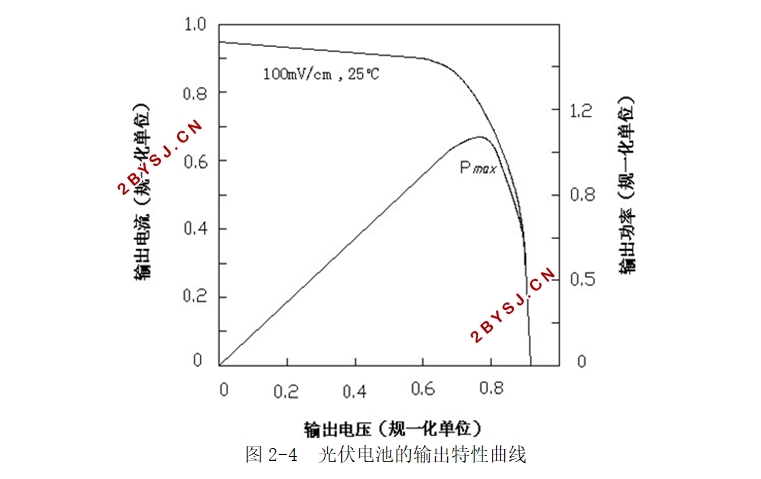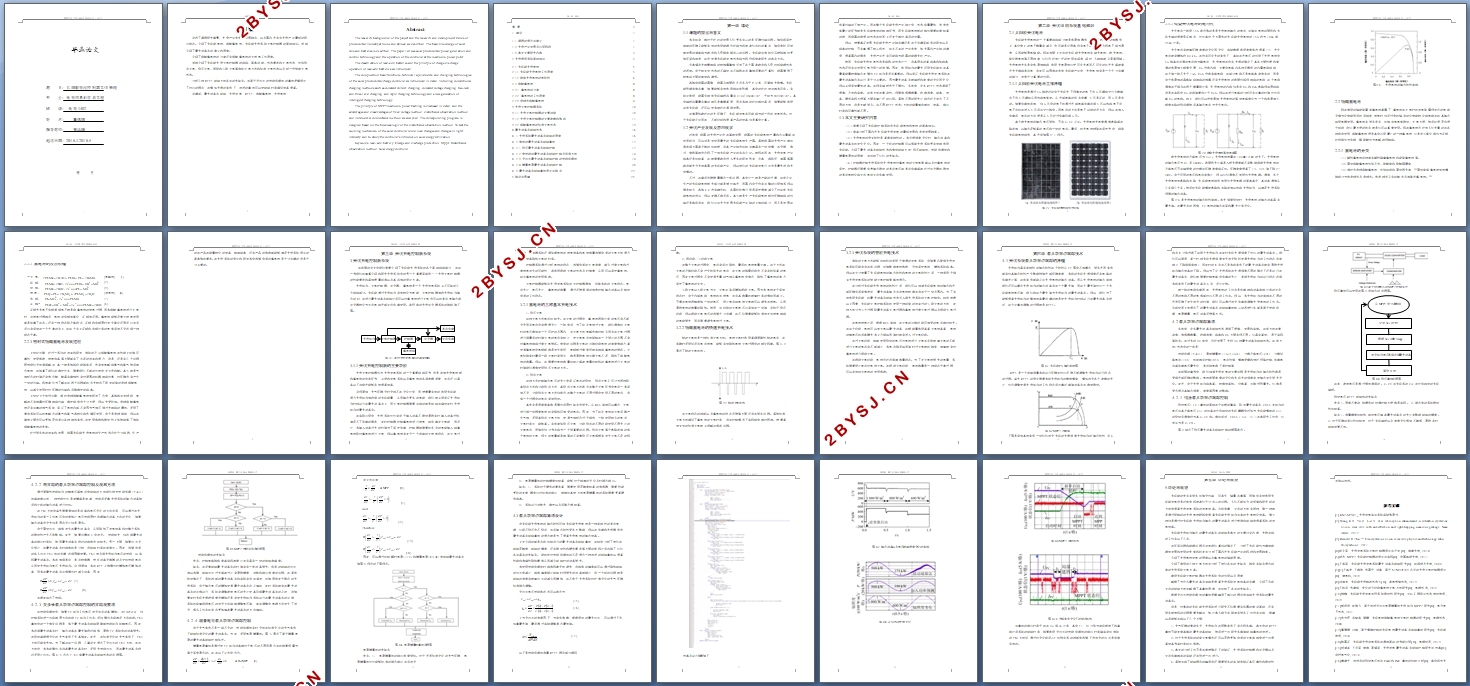太阳能电池控制器工作原理
无需注册登录,支付后按照提示操作即可获取该资料.
太阳能电池控制器工作原理(外文翻译,论文11300字)
摘 要
论述了课题研究背景、光伏产业未来的发展趋向、以及国内外有关光伏产业最新的研讨动态。介绍了太阳能电池、铅酸蓄电池、太阳能光伏系统充电控制器的基础知识。详细介绍了最大功率点的意义和原理。
介绍了铅酸蓄电池的分类还有铅酸蓄电池的充放电工作原理。
详细介绍了太阳能光伏充电控制器的组成、基本功能、技术要求和充电技术,包括恒流充电、恒压充电、两级和三级充电等传统充电方式和快速充电技术以及新一代智能充电技术。
分析几种MPPT跟踪方法各自的优缺点。并基于变步长的扰动观察法的算法逻辑设计了对应的程序,在模拟光照的条件下,改进的算法可以使跟踪时间缩短效率提高。
关键词:最大功率点跟踪,光伏发电,MPPT,铅酸蓄电池,光伏电池
Abstract
The research background of the project and the research and development trends of photovoltaic industry at home and abroad are described. The basic knowledge of solar cells and batteries is described. The paper reviews solar photovoltaic power generation and control technology and the operation of the controller at the maximum power point.
The classification of lead-acid batteries and the principle of charge-discharge operation of lead-acid batteries are introduced.
The composition, basic functions, technical requirements, and charging technologies of the solar photovoltaic charge controller are introduced in detail, including conventional charging methods such as constant current charging, constant voltage charging, two-level and three-level charging, and rapid charging technology and a new generation of intelligent charging technology.
The principle of MPPT maximum power tracking is discussed in detail, and the advantages and disadvantages of fixed voltage method, disturbance observation method and incremental conductance method are analyzed. The corresponding program is designed based on the business logic of the disturbance observation method. To test the working mechanism of the solar controller under load changes and changes in light intensity; and to study the controller's influence on solar energy utilization.
Key words: lead-acid battery; Charge and discharge protection; Mppt; Disturbance observation method; Solar energy controller
1.3本文主要研究内容
(1)简要介绍了太阳能控制系统中太阳能电池和电池的基本知识。
(2)简单分析了国内外太阳能光伏发电的最新发展和未来发展趋势。
(3)光伏电池的伏安特性是高度非线性的。当日照强度变化时,输出功率和最大功率点将发生变化。因此,一个好的控制器可以帮助光伏系统更有效地利用太阳能。介绍了最大功率点跟踪技术和常规跟踪方法:恒压跟踪法、扰动观察法和增量电导法的原理,并比较了它们的优缺点。
(4)控制器控制光伏系统中光伏电池对蓄电池的充放电策略以及对蓄电池的保护;控制器还需要负责输出稳定的直流电压给直流负载或者经过逆变器将稳定的直流电转化成交流电供交流负载使用。


摘 要 2
1 绪论 1
1.1课题的提出与意义 1
1.2光伏产业发展及应用现状 1
1.3本文主要研究内容 2
2光伏照明系统基础知识 5
2.1太阳能光伏电池 5
2.1.1太阳能光伏电池工作原理 5
2.1.2硅型光伏电池的电特性 6
2.2铅酸蓄电池 8
2.2.1 蓄电池的分类 8
2.2.2 蓄电池的工作原理 8
2.2.3密封式铅酸蓄电池 9
3光伏充电控制器系统 10
3.1.1光伏充电控制器的主要功能 10
3.1.2光伏充电控制器的主要参数和指标 11
3.2.2铅酸蓄电池的快速充电技术 13
4最大功率点跟踪技术 16
4. 1光伏系统最大功率点跟踪的原理 16
4. 2常规的最大功率点跟踪算法 17
4. 2. 1 恒压最大功率点跟踪控制 17
4. 2. 2 带扰动的最大功率点跟踪控制及观测方法 19
4. 2. 3 变步长最大功率点跟踪控制的扰动观察法 19
4. 2 .4 增量电导最大功率点跟踪控制 20
4. 3 最大功率点跟踪算法设计与结论 22
5结论与展望 25
